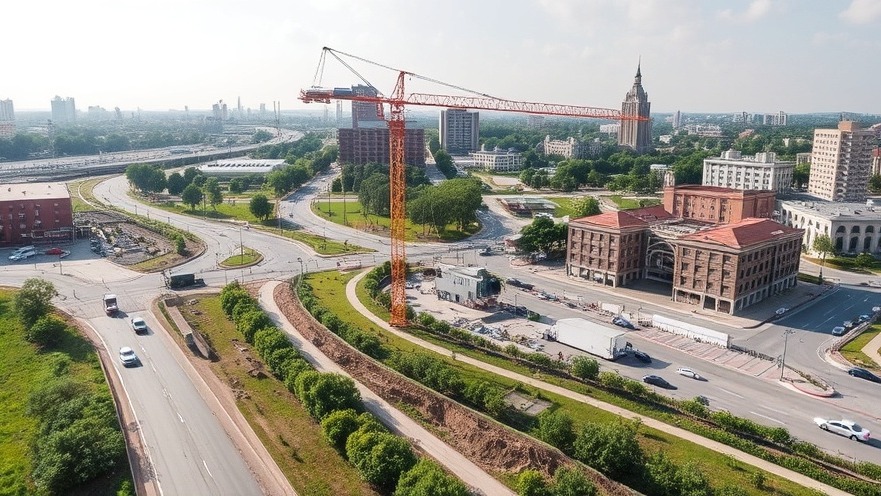
Transforming London's Green Belt: A Necessary Shift for Homeowners
The looming housing crisis in London has sparked a significant policy shift under Mayor Sadiq Khan. This Friday, during a vital speech in Greenwich, Khan is expected to announce plans that incorporate building much-needed homes on portions of London's green belt. Particularly, low-quality land within this area could be repurposed to address a critical issue facing residents: the severe lack of affordable housing.
Khan argues that the current approach to housing is outdated and unsustainable, asserting that a new path must be forged to accommodate the needs of a burgeoning London population. A startling statistic reveals that the city must aim for a target of 88,000 new homes annually; however, the current efforts only yield approximately 40,000 each year. Homeownership, particularly for younger generations, seems increasingly out of reach with escalating rent prices, which shot up by 11.5% last year.
Unpacking the Green Belt Debate: Affordable Housing vs. Preservation
As Sadiq Khan explores options for housing expansion, the conversation inevitably leads to the contentious issue of the green belt itself. While it serves as an important buffer of nature around urban areas, Khan asserts that much of this land remains low-quality and underutilized: around 87% of it offers limited public access. Should we sacrifice portions of this land for the greater good of urban living and housing accessibility? This question warrants thoughtful consideration.
Supporters applaud Khan’s initiative, emphasizing the urgent need for increased housing stock, especially affordable homes. For young homeowners, the prospects of utilizing the green belt could dramatically shift the housing landscape. Nonetheless, opponents of this plan caution against the potential degradation of valuable green spaces—a vital element of London's character and environment.
A Vision for the Future: Balancing Construction and Sustainable Living
The recent green belt proposals coincide with a broader review of the London Plan, a crucial policy document that outlines the city’s building and development framework for the next two decades. Land use plans must incorporate environmentally friendly practices, embedding sustainable living into the very fabric of new builds. As city planners weigh the importance of green spaces alongside pressing housing needs, effective strategies to promote eco-friendly construction are paramount.
Engaging the Community: Why Every Voice Matters
As Mayor Khan emphasizes the importance of community consultation in this endeavour, it’s vital for residents—especially young homeowners—to engage in these dialogues. Participatory planning can help ensure that housing developments are both affordable and reflective of community needs. Stakeholders like Claire Holland, leader of Lambeth Council, have expressed support for collaboration between boroughs, emphasizing that “boroughs are resolutely pro-housebuilding.” Interactions between local government and young homeowners can shape future successes in property investment and sustainable community growth.
Taking Action: What Can You Do?
For young homeowners in London, this shift could offer avenues for change that directly benefit your living conditions. Ensuring you’re engaged with local council decisions can yield protection for green spaces you cherish while also advocating for innovative housing solutions. Sign up for local updates, attend public consultations, and lend your voice to the ongoing conversations about housing and community development.
In conclusion, Sadiq Khan’s announcement to consider building on the green belt is a pivotal moment for London's future. Balancing the needs for housing development while preserving the essence of the city’s landscapes is no small feat, but it’s a discussion worth having. As you contemplate your own homeownership journey, remember the importance of your participation in shaping your community.
 Add Row
Add Row  Add
Add 






Write A Comment